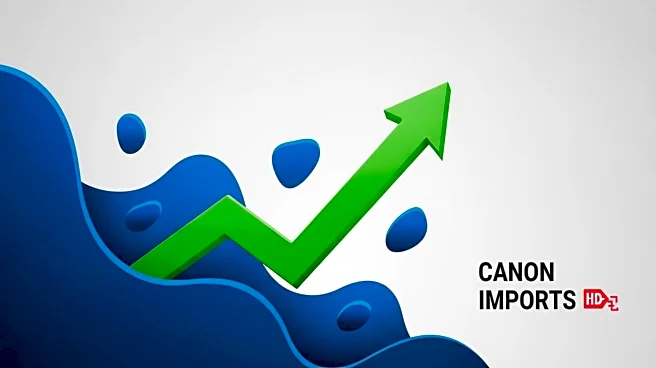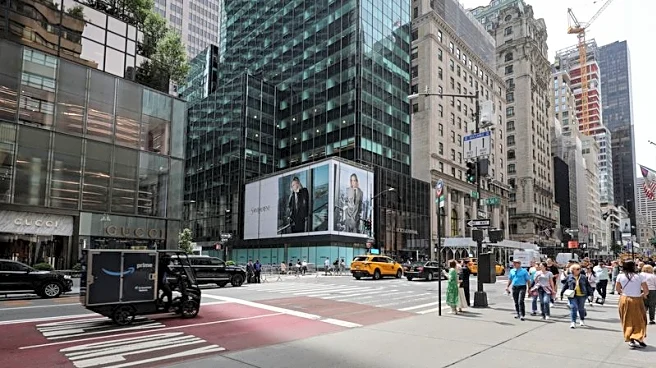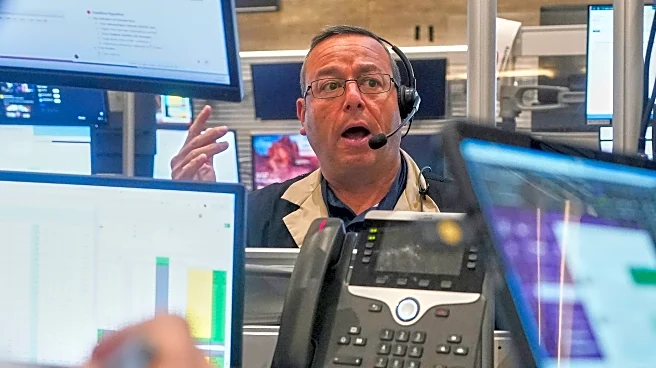What's Happening?
The U.S. Commerce Department has revised the second-quarter GDP growth rate to 3.3%, up from the initially reported 3.0%. This revision reflects increased consumer spending and business investment, particularly in intellectual property products like artificial intelligence. Despite this positive adjustment, the economic outlook remains clouded by ongoing tariff issues implemented by President Trump's administration. These tariffs have led to significant fluctuations in import levels, affecting GDP readings. The Federal Reserve is expected to consider these developments as it contemplates interest rate cuts next month, focusing on a softening labor market. Corporate profits have rebounded, but protectionist trade policies continue to pose challenges for various industries.
Why It's Important?
The revised GDP figures indicate stronger economic activity than previously thought, which could influence Federal Reserve policy decisions. The potential interest rate cuts are significant for businesses and consumers, as they could lower borrowing costs and stimulate further economic growth. However, the ongoing tariff issues present a risk to sustained economic expansion, impacting sectors like manufacturing and retail. Companies such as General Motors and Abercrombie & Fitch have already reported financial hits due to increased import duties. The broader implications of these tariffs could lead to increased costs for consumers and businesses, potentially slowing down economic momentum.
What's Next?
The Federal Reserve's upcoming policy meeting in September will be crucial, as it may decide to cut interest rates in response to labor market conditions and inflation threats. Businesses and investors will be closely monitoring these developments, as rate cuts could provide relief amid tariff-induced economic pressures. Additionally, ongoing trade negotiations and potential adjustments to tariff policies could further impact economic forecasts and corporate strategies.













